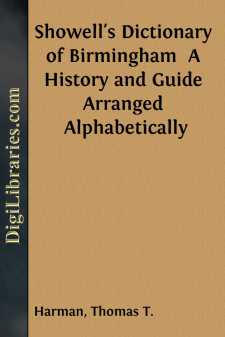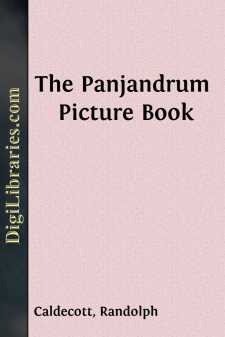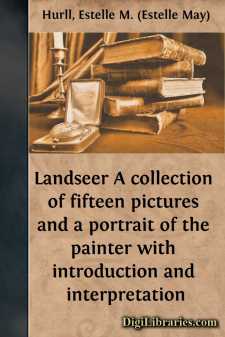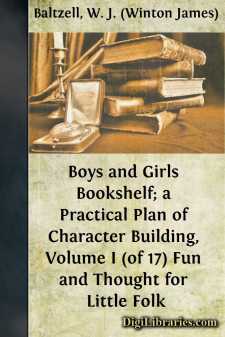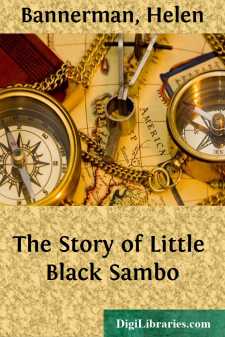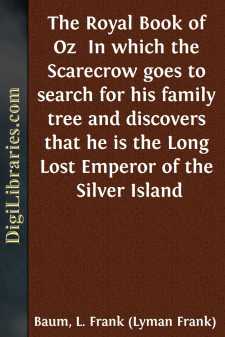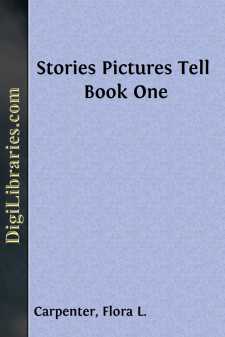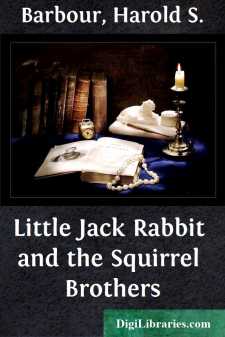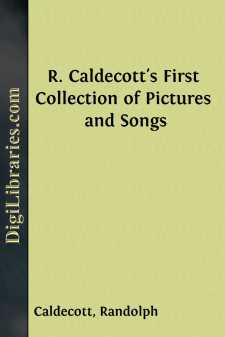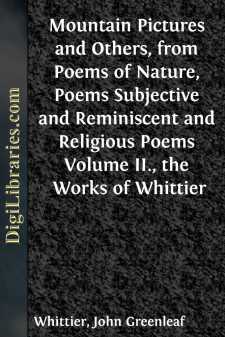Categories
- Antiques & Collectibles 13
- Architecture 36
- Art 48
- Bibles 22
- Biography & Autobiography 813
- Body, Mind & Spirit 142
- Business & Economics 28
- Children's Books 17
- Children's Fiction 14
- Computers 4
- Cooking 94
- Crafts & Hobbies 4
- Drama 346
- Education 46
- Family & Relationships 57
- Fiction 11829
- Games 19
- Gardening 17
- Health & Fitness 34
- History 1377
- House & Home 1
- Humor 147
- Juvenile Fiction 1873
- Juvenile Nonfiction 202
- Language Arts & Disciplines 88
- Law 16
- Literary Collections 686
- Literary Criticism 179
- Mathematics 13
- Medical 41
- Music 40
- Nature 179
- Non-Classifiable 1768
- Performing Arts 7
- Periodicals 1453
- Philosophy 64
- Photography 2
- Poetry 896
- Political Science 203
- Psychology 42
- Reference 154
- Religion 513
- Science 126
- Self-Help 84
- Social Science 81
- Sports & Recreation 34
- Study Aids 3
- Technology & Engineering 59
- Transportation 23
- Travel 463
- True Crime 29
Showell's Dictionary of Birmingham A History and Guide Arranged Alphabetically
by: Thomas T. Harman
Description:
Excerpt
SHOWELL'S
NOTES OF BIRMINGHAM IN THE PAST.
Birmingham to the Seventh Century.—We have no record or traces whatever of there being inhabitants in this neighbourhood, though there can be little doubt that in the time of the invasion of the Romans some British strongholds were within a few miles of the place, sundry remains having been found to show that many battles had been fought near here. If residents there were prior to King Edward the Confessor's reign, they would probably be of Gurth's tribe, and their huts even Hutton, antiquarian and historian as he was, failed to find traces of. How the name of this our dwelling-place came about, nobody knows. Not less than twelve dozen ways have been found to spell it; a score of different derivations "discovered" for it; and guesses innumerable given as to its origin, but we still wait for the information required.
Birmingham in the Conqueror's Days.—The Manor was held, in 1066, by Alwyne, son of Wigod the Dane, who married the sister of the Saxon Leofric, Earl of Mercia. According to "Domesday Book," in 1086, it was tenanted by Richard, who, held, under William Fitz-Ansculf, and included four hides of land and half-a-mile of wood, worth 20s.; there were 150 acres in cultivation, with but nine residents, five villeins, and four bordarers. In 1181 there were 18 freeholders (libere tenentes) in Birmingham cultivating 667 acres, and 35 tenants in demesne, holding 158 acres, the whole value being £13 8s. 2d.
Birmingham in the Feudal Period.—The number of armed men furnished by this town for Edward III.'s wars were four, as compared with six from Warwick, and forty from Coventry.
Birmingham in the Time of the Edwards and Harrys.—The Manor passed from the Bermingham family in 1537, through the knavish trickery of Lord L'Isle, to whom it was granted in 1545. The fraud, however, was not of much service to the noble rascal, as he was beheaded for treason in 1553. In 1555 the Manor was given by Queen Mary to Thomas Marrow, of Berkswell.
Birmingham in 1538.—Leland, who visited here about this date, says in his "Itinerary"—"There be many smithies in the towne that use to make knives and all manner of cutlery tooles, and many lorimers that make bittes, and a great many naylors, so that a great part of the towne is maintained by smithes, who have their iron and seacole out of Staffordshire." He describes the town as consisting of one street, about a quarter of a mile long, "a pretty street or ever I enterd," and "this street, as I remember, is called Dirtey."
Birmingham in 1586.—Camden in his "Britannica," published this year, speaks of "Bremicham, swarming with inhabitants, and echoing with the noise of anvils, for the most part of them are smiths."
Birmingham in 1627.—In a book issued at Oxford this year mention is made of "Bremincham inhabited with blacksmiths, and forging sundry kinds of iron utensils."
Birmingham in 1635.—As showing the status the town held at this date we find that it was assessed for "ship money" by Charles I....


